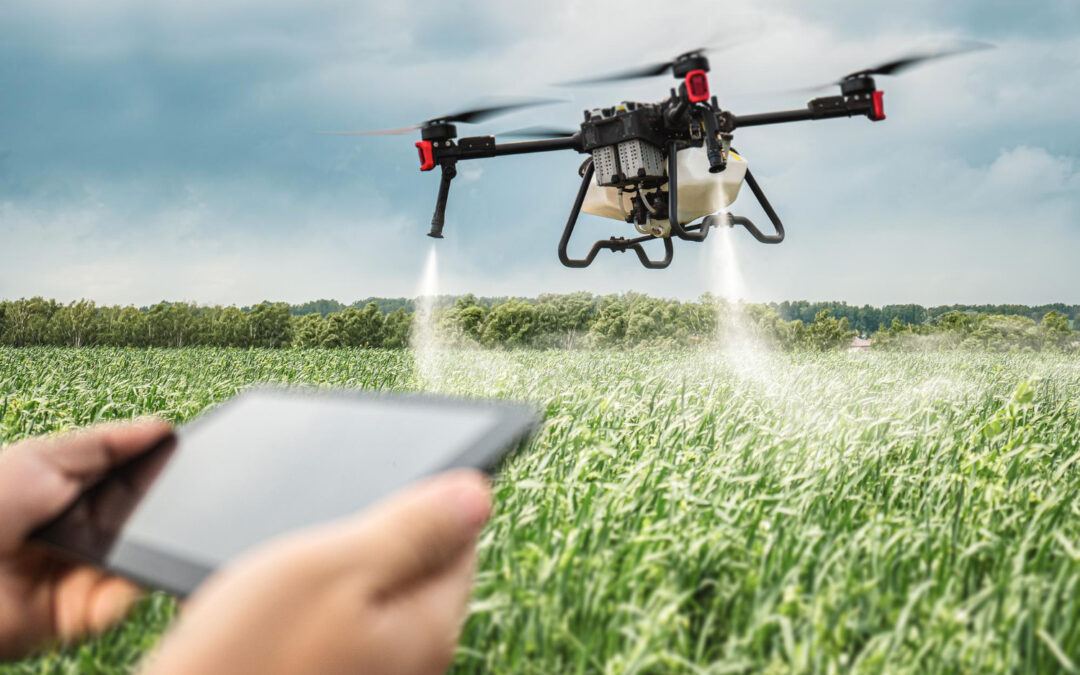Farming in Oklahoma has seen significant advancements with the introduction of agri drones. These drones are game-changers, providing precision in tasks like crop monitoring and pesticide applications. However, just like any other piece of equipment, they come with their set of issues, and battery drainage stands out among these. Ensuring your agri drone operates reliably is essential for maintaining the continuity of these vital farm operations.
Imagine being halfway through surveying your field when your drone decides to call it a day. That’s battery drainage for you – it can turn the efficiency of drone usage into a frustrating experience. Addressing battery issues promptly not only enhances the drone’s performance but also prevents interruptions that could impact farm productivity. Let’s explore what causes these problems and how you can tackle them effectively.
Understanding Battery Drainage
Battery drainage is a common issue for drone users, especially when you’re out in the field needing consistent performance. It happens when the drone uses energy faster than the battery can supply, leading to quicker power depletion. There are a few reasons why this might occur.
1. Overuse: Running the drone for extended periods without breaks puts a heavy load on the battery.
2. Environmental Conditions: Extreme temperatures, whether hot or cold, can affect how effectively the battery holds a charge.
3. Improper Charging: Not following proper charging procedures can reduce battery capacity over time.
Symptoms of battery drainage are hard to miss. If your drone can’t hold a charge for long or takes forever to recharge, those are red flags. Another telltale sign is if the drone loses power midway through tasks. Understanding these symptoms helps you diagnose and address problems sooner, ensuring better operational efficiency.
Causes of Battery Drainage in Agri Drones
Understanding why battery drainage happens can help prevent it from becoming a recurring problem. Let’s look at some typical causes:
1. Overuse: Pushing your drone to its limits without giving it a break can cause the battery to drain faster. Regular pauses are essential to let the battery cool down.
2. Environmental Factors: Operating drones in extreme temperatures stresses the batteries. High heat or freezing cold can significantly impact how long a charge lasts.
3. Improper Charging: Not all chargers are created equal. Using the wrong charger or frequently overcharging can degrade battery health over time.
4. Battery Age: Batteries lose their capacity as they age. If your drone’s battery is a couple of years old, it might be time to consider a replacement.
To help minimize these issues:
- Regularly inspect your drone for signs of wear or damage.
- Avoid using the drone in extreme weather.
- Use chargers specifically designed for your drone model.
- Replace old batteries when they start showing signs of wear.
Troubleshooting and Fixing Battery Issues
When your drone starts showing signs of battery problems, troubleshooting can help identify and solve the issue. Here’s a guide to help you get started:
1. Check the Battery Connection: Ensure that the battery is properly seated and connected. Loose connections can lead to intermittent power loss.
2. Examine for Damage: Remove the battery and inspect it for any physical damage or leaks. Damaged batteries should be replaced immediately to avoid further problems.
3. Calibration: Sometimes, recalibrating the drone’s battery settings can help. This process can vary, so refer to the drone’s manual for specific instructions.
4. Battery Swap Test: If you have a spare, try swapping out the battery to see if the issue persists. This can help isolate whether the battery or another component is at fault.
5. Software Updates: Ensure your drone’s firmware is up to date. Occasionally, manufacturers release updates that improve battery management.
Troubleshooting these issues effectively requires patience—but taking these steps can significantly improve your drone’s performance.
Preventive Measures to Avoid Future Problems
Keeping your drone’s batteries in good health involves regular maintenance and smart usage practices. Here’s what you can do to prolong battery life:
- Regular Maintenance: Schedule routine checks for your drone to ensure all components, including the battery, are functioning optimally.
- Proper Charging Practices: Always use the correct charger and avoid frequent full discharges. It’s best to store batteries at about 50% charge when not in use for a while.
- Avoid Overheating: Allow the battery to cool down before recharging it. If you notice the battery getting too hot, give it a break.
- Proper Storage: Store your batteries in a cool, dry place. Extreme humidity or temperature can alter the battery’s chemistry, reducing its life.
By taking these preventive steps, you protect your investment and enhance the longevity of your drone’s battery.
Ensuring Optimal Drone Performance
To wrap things up, addressing battery issues effectively ensures your drone runs smoothly, reducing downtime and letting you focus on more significant farming tasks. Understanding the causes and taking preventive measures will not only keep your drone in the air longer but also save you from potential headaches down the road.
Regular maintenance, smart charging habits, and being mindful of environmental conditions can go a long way in maintaining optimal battery performance. Should problems continue, seeking help from professionals ensures your equipment is in top shape and ready for the challenges ahead. Consistent care truly makes the difference in keeping your drone fleet ready to tackle any task on the farm.
To keep your agri drone performing at its best while navigating the expansive fields of Oklahoma, consider the advantages of regular maintenance and professional assistance. At Osprey Agri Drones, we specialize in ensuring your drone stays in optimal condition, ready to meet the demands of modern farming. Explore more about how an agri drone can revolutionize your agricultural operations and keep your equipment flying smoothly.


